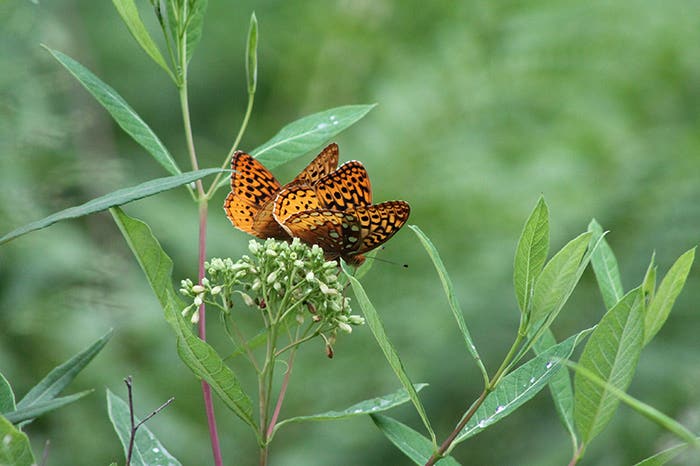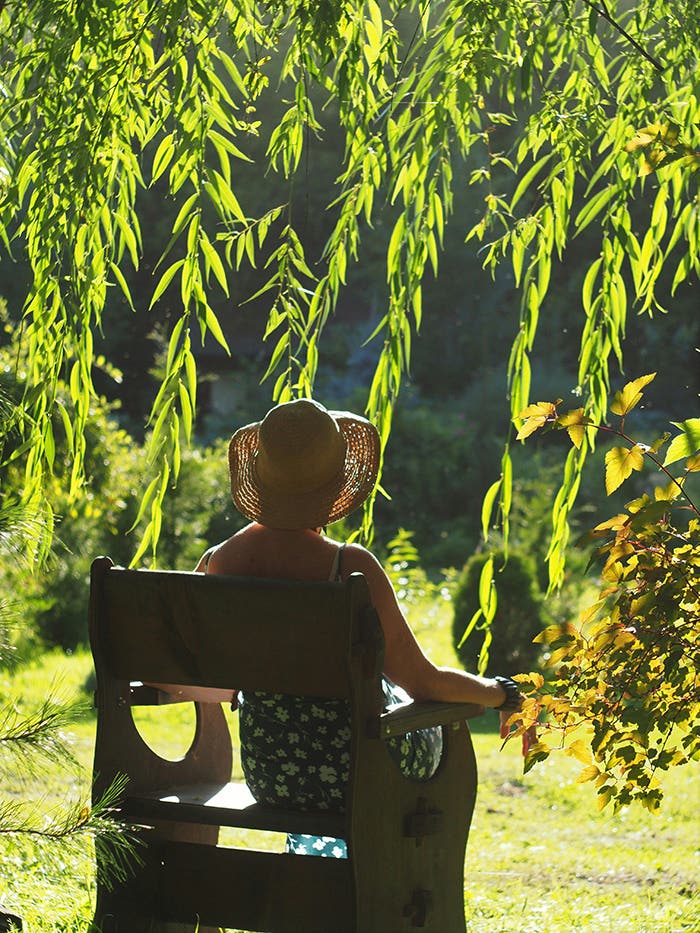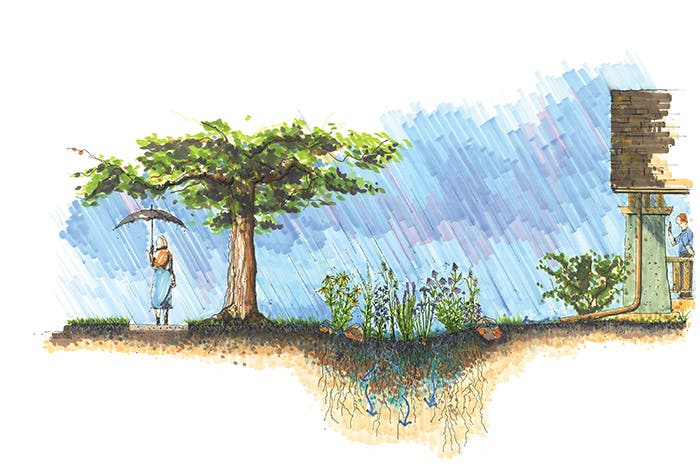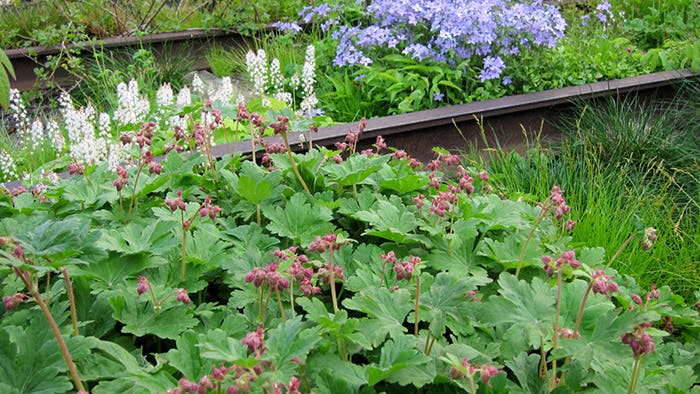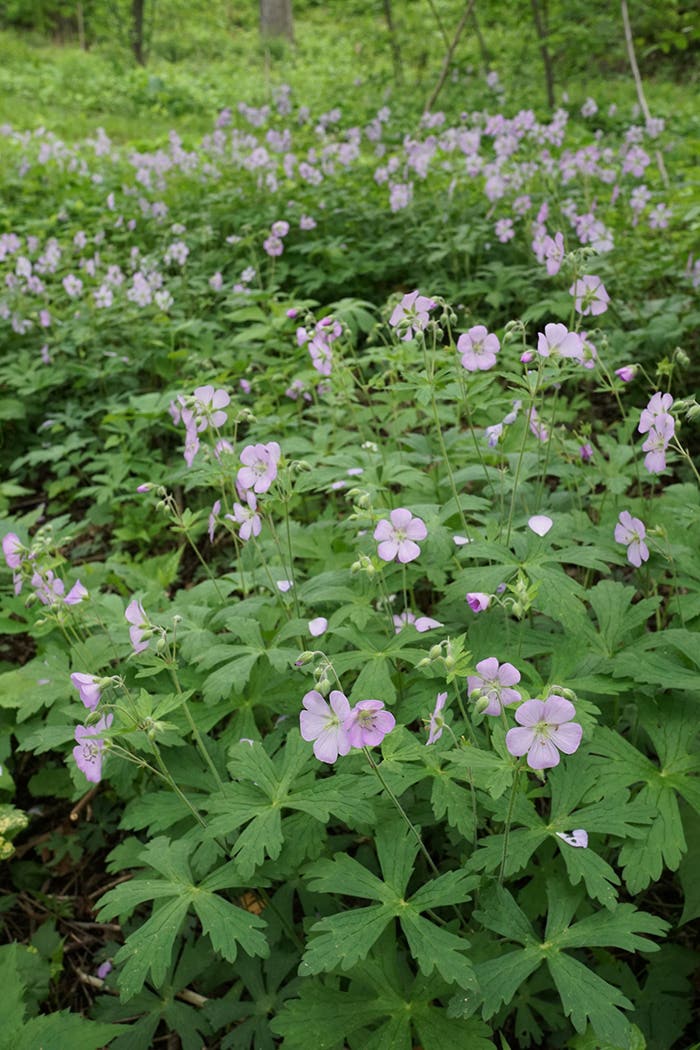Natural Value
The scene is an herb and wild garden planted in a dry stone terrace that hugs two sides of our house. It measures about 1,600 square feet—less than a twentieth of an acre. Before we made this garden, the area was a lawn—a brown lawn, for this hot, south-facing terrace lies on sterile soil that in some places barely covers the granite ledge below. And in most seasons, there were no birds.
As I write, it is mid-July. A pair of goldfinches inspects a bed of western sunflowers, checking for ripening seed. Ruby-throated hummingbirds lick their nectar breakfast from the trumpet creeper's fiery cups. This morning I count five Carolina wrens pecking among the sandset paving stones where sprout tiny annual rushes topped with golden grain. A stir in the beach plum trees catches my attention. I'm surprised: a flock of juncoes is pecking the purpling fruit.
The scene is an herb and wild garden planted in a dry stone terrace that hugs two sides of our house. It measures about 1,600 square feet—less than a twentieth of an acre. Before we made this garden, the area was a lawn—a brown lawn, for this hot, south-facing terrace lies on sterile soil that in some places barely covers the granite ledge below. And in most seasons, there were no birds.
My first idea for replacing the failed turf was simply to create an appropriate planting that would need no irrigation, pest control, or feeding. The herb garden outside the kitchen door was already thriving under harsh conditions, but I'd become interested in native plant communities and hoped to reproduce that scrubby assortment of species found hereabouts on bald-topped hills, abandoned granite quarries, and sandy barrens. So with field guides in hand, I set out for such remnant pockets to identify the possibilities.
They were myriad: fruits such as wild strawberry, running serviceberry, and beach plum; dryland forbs like birdsfoot violet (Viola pedata) and short, drought-resistant asters (A. sericeus, A. rigidus). Notably, both shrubs and forbs were bedded in thickly clumping grasses impenetrable by weeds. These groups of species grew jammed together wherever they could find sufficient soil. Among them wove narrow footpaths of bare rock or trodden earth. The terrace follows that natural design: it is basically a meander of stone paths laid in sand among irregularly shaped planting beds. I figured that by mimicking natural habitat, the garden would naturally attract associated inhabitants—pollinating bees, nectaring butterflies, grasshoppers, and tunnelers from ants and toads to chipmunks. I knew birds would control pests (now I wonder if the juncoes actually were pecking aphids or scale insects from the plum trees), so I hopefully added a granite birdbath and a bluebird box. But I hadn't figured on the plenitude of avian life that descended on this paradise: only later research explained the phenomenon.
Native plant communities have co-evolved for eons with the animals that serve them. They time their bloom for those that fertilize their flowers and their ripening for those that disperse their seeds. Crab apples bloom in May to capture the market in the early-hatching insects that fertilize their flowers, but the fruit ripens late to corner the fall traffic in migrating birds that will disperse their seed.
The needs of these service providers change through the seasons. Because of baby birds’ extraordinary growth rate, their parents must feed them high-protein insects regardless of whether their diet in other seasons will be seeds or fruit or nectar. Those that switch to fruit after the young are fledged need ripening crops from early strawberries through summer blueberries and fall-maturing wintergreen. Fruit eaters that overwinter, mockingbirds for instance, rely on withered crab apples and wild roses that hold their hips all winter. Strictly insectivorous birds need their meat evenly distributed over the seasons, and this is only possible where insects, too, find the diversity of plants that fit their brief time slot and their fussy dietary needs. By hot July, the typically exotic perennial garden offers little to summer pollinators or their insect predators. There are no grasshoppers in such borders because there is no grass. Our old and old-fashioned flower garden, though only 20 paces from the wild terrace, is devoid of birds.
The terrace, however, is like a village: homes, shops, and conveniences (such as the bird bath and the footpaths) intermingled in an economic whole. The garden is for our convenience, too. Although I harvest from it only the herbs outside the kitchen door—the fruiting species are uncultivated types not worth the trouble to harvest—it is my wildlife watching station. The entire terrace is visible out the windows in any weather. Because the garden is right against the house, and we so often traffic through it, its wildlife has become enured to our presence. We—and you if you plant such a garden—need travel no farther between home and “nature” than do the other inhabitants who share our human habitat.


